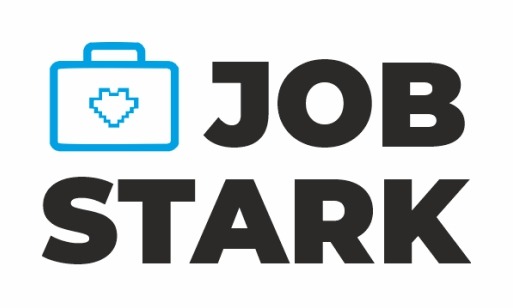
From Indeed Editorial Team
Time management and organizational skills can commonly be correlated to overall work productivity. When you implement strategies that support your productivity, you may have a higher chance of developing and improving your product output. Time management is just one of the strategies you can use to increase your productivity. Also, you can apply organizational strategies such as prioritizing your tasks by order of importance and urgency.
The following 10 tips offer ways you can increase your work productivity.
1. Focus on one task at a time
While you ultimately may be able to get things done when you juggle projects or tasks, focusing on one at a time may help you be more productive. When we concentrate on more than one activity at a time, we tend to use more of that time just for transitioning between tasks. This can result in some of the tasks remaining incomplete or being done at a lower quality than if each task had been a sole focus.
Additionally, concentrating on one task at a time until it is complete can help you increase your productivity because when you focus on one project at a time, you are setting a single objective at once instead of many. This is likely to motivate you to complete one task before moving on to your next assignment. If you are dedicated to multitasking, but you see that you start more tasks than you can finish, consider prioritizing your tasks in order of importance so you can start on your most demanding assignments and finish your day with lighter and less time-consuming tasks.
2. Take regular breaks
It can be tempting to avoid taking the time for a break, but when you neglect to give yourself a time-out for a few minutes, it can harm your overall productivity by resulting in fatigue or burn-out. If this happens, you may not have the energy or motivation to continue making progress. Consider planning out several short breaks during your workday. Most workplaces have a mandatory schedule with dedicated break times, so employees can take at least a five- to 10-minute break after every few hours of active work. These short breaks can allow you to recharge, clear your mind and get ready for the next task.
3. Focus on your biggest tasks first

Focusing on your biggest and most time-consuming tasks before any other assignments can help you stay more focused than working on smaller and shorter tasks first. Consider planning your assignment list according to these tasks, where you may dedicate your time in the morning when you first arrive to work or at a time of day when you are most alert and energized.
4. Set small objectives
Rather than approach large goals that would require multiple outlets and longer amounts of time to achieve them, consider planning out small objectives throughout your day. Things like filing required paperwork, responding to those four client emails or compiling all the resources together that your team will need to complete a future project are small, daily objectives you can set and reach during your eight hours of work time. Similarly, you may use these short objectives as milestones to measure your progress toward a larger goal.
5. Use the two-minute rule
The two-minute rule involves completing tasks that are two minutes or less as well as taking two minutes to get started on small tasks that you may have been putting off. During these short stints of time, if there is a task you can complete in two minutes or less or a task you can get organized to start on, this is the time you would do it. For instance, it may only take two minutes to log the tasks you have already completed, respond to a quick email, write down your next objectives or print out the outline for your upcoming project assignment, but the two minutes it takes you to complete these little tasks can oftentimes add up to a completed to-do list at the end of the day.
Additionally, small tasks are still an important part of your overall work productivity, so practicing the two-minute rule can allow you to focus on those small tasks in between the time it takes to work on larger and more complicated tasks. Consider those two minutes between break time and getting started on your next project or the two minutes it takes to get ready for lunch and consider using that time to take note of what you need to work on next, your daily goals for the next day or responding to that voicemail that has been waiting for you since you got to work.
6. Time block your schedule
Using time blocks within your schedule can also help you increase your productivity. With this strategy, you would set a time limit for each of the tasks you work on. Consider 90-minute or 60-minute time blocks. You may choose to make a printout of your schedule and highlight the time frames where you want your time blocks to be. So if you are blocking out 90 minutes to work on a project, note that on your printed schedule. After that time block is over, block another section of your schedule similarly.
The purpose of time blocking is to create a visual schedule to help you track the periods of tasks you work on. Similarly, it serves as a way to dedicate yourself to working on only a specific task for each block of time, so you will be more likely to complete it in the time frame you scheduled for it. In addition to scheduling your working time, you may also include your break times between each task block so you can refresh yourself as you complete and start new projects.
7. Make meetings more productive
If you have meetings scheduled throughout your day, consider some ways to make these more productive activities that contribute to your overall work progress. Consider standing meetings where you and your colleagues stand up for the meeting. This can help increase alertness and focus when discussing important topics during your meeting.
You may also utilize time tracking to record the time it takes to attend and conclude the meeting. For instance, consider keeping notes on the most important takeaways or topics that need to be discussed, and dedicate a specific amount of time for each topic. Then, work with your team to only discuss what is included in the topic list while keeping topic discussions limited to their allotted times.
Similarly, if you can reasonably attend your meeting via phone or web-based platform, you may be able to increase your chances that the meeting will not take too much time away from your personal tasks.
8. Delegate tasks
Consider using delegation methods to split up tasks between your team members. For instance, if you have a variety of tasks on your to-do list, consider assigning some of these tasks to others if they can be completed without you working on them.
Delegating tasks can also allow you to work on other assignments that may be specifically assigned to you alone, while the rest of the team can dedicate their time to the tasks that would otherwise take time or resources away from other more important projects. For example, if you have emails that need to be answered, but a coworker can provide the same attention to detail in their responses as you, consider giving them the task while you work on pertinent assignments that no one else can (or is permitted to) complete.
9. Use the Pomodoro strategy
Being more productive at work can depend heavily on your time management, and the Pomodoro method is a strategy that you may find helpful for managing your time more efficiently. Similar to scheduling breaks, the Pomodoro method applies the use of a timer, where you dedicate yourself to a task for 20 minutes (though you can increase this to 30 minutes), work on it until the timer goes off and then take a five-minute break. This strategy can be effective because it provides more time for uninterrupted, focused work and then provides a way to step back from the task for a few minutes before going back to complete it.
10. Limit interruptions
Interruptions can sideline us throughout the day. Even though you may enjoy your relationships with your coworkers, losing track of time due to conversations, informal and quick meetings or topic discussions can hinder your workflow and decrease your overall productivity. Consider using some strategies to limit the number of interruptions during your day.
You may choose to work with your office door closed for a portion of your day, or if you work in an open-office environment, you might use noise-canceling headphones to help limit the sounds of office chatter and interaction. Headphones can also be a polite but silent way to let your colleagues know that you need to concentrate on the projects you are working on.
Finally
When implementing strategies to help you increase your work productivity, it is important to be as consistent as you can. Allow yourself to learn and develop your skills, and you can be certain that your productivity will continue to improve as well.

Just randomly came across this and it is good content. Thanks for the info jobstark